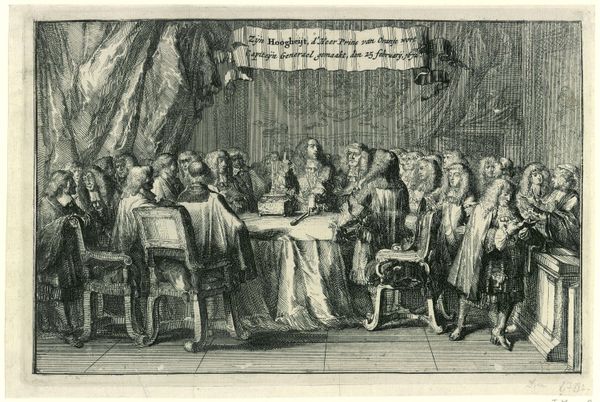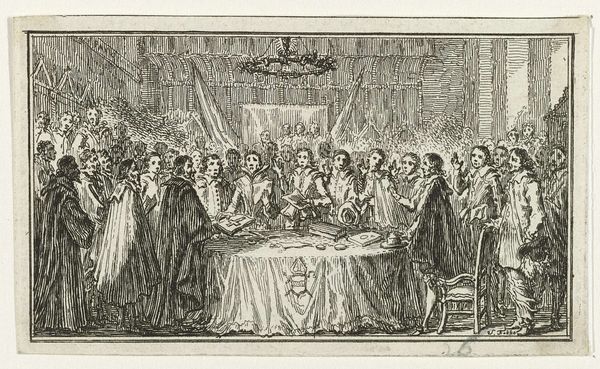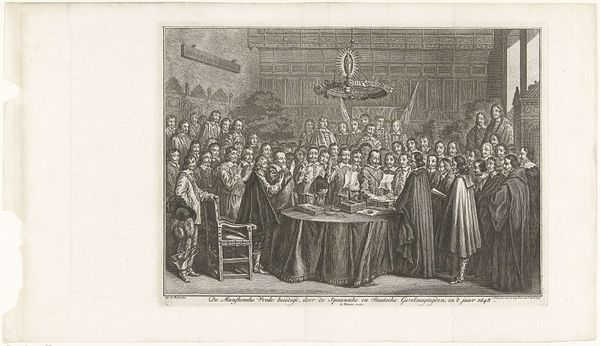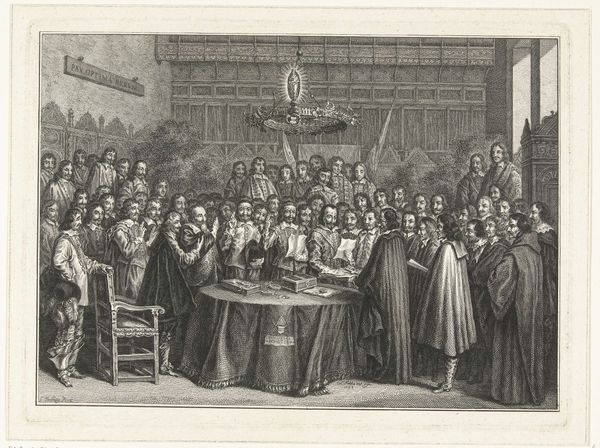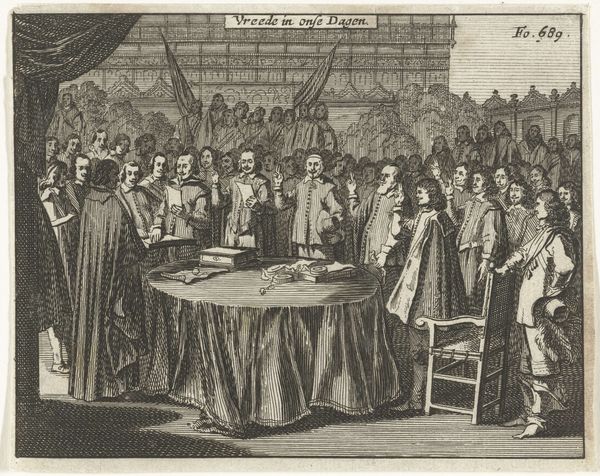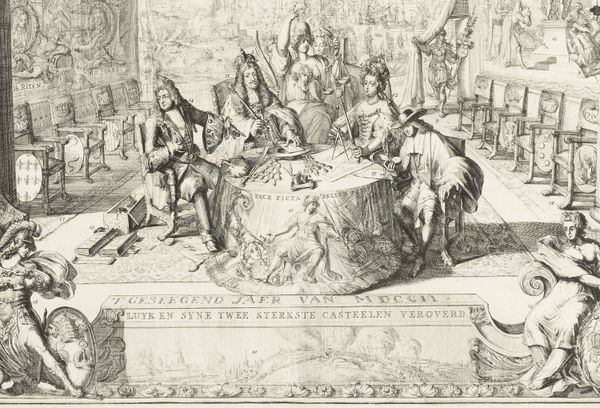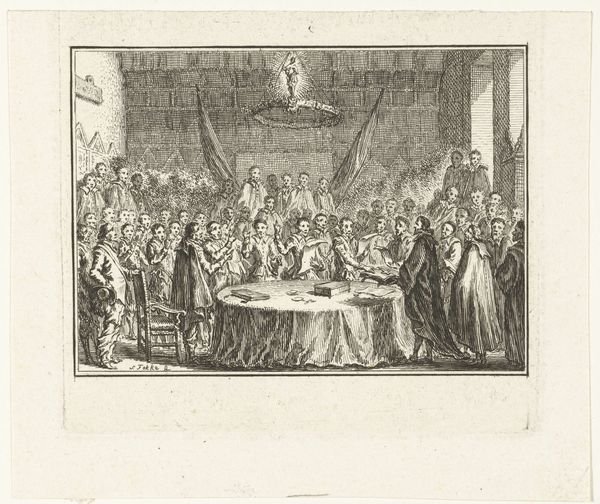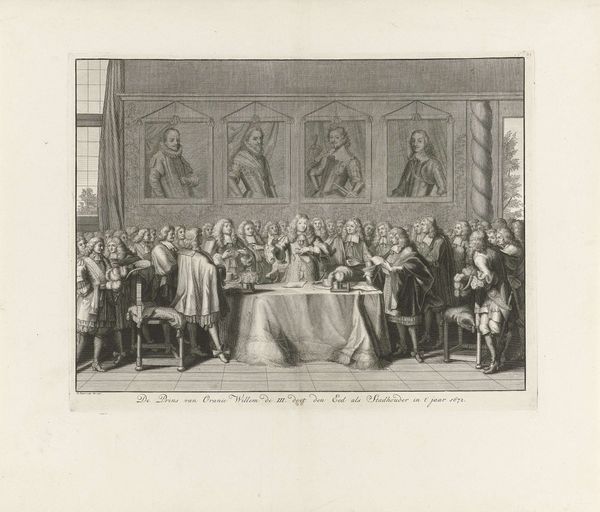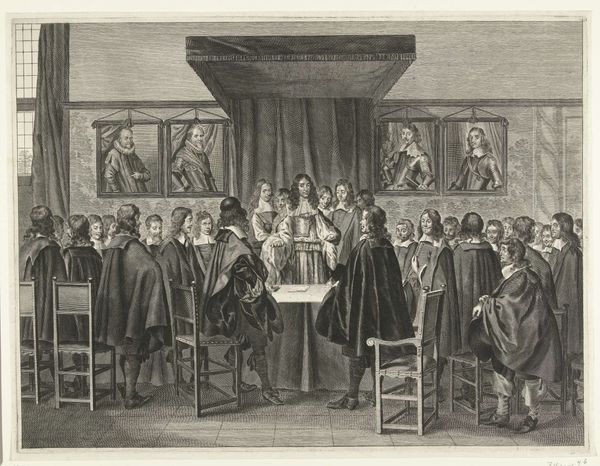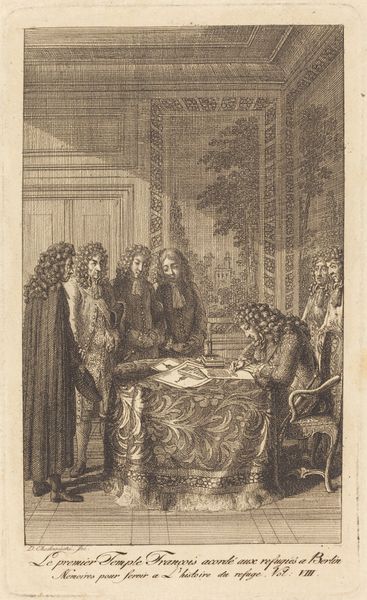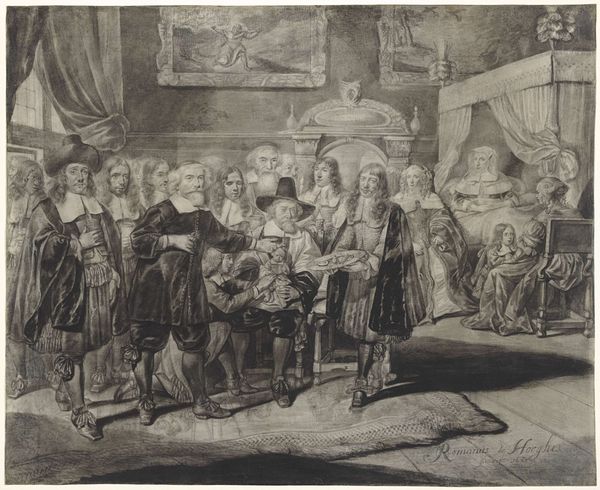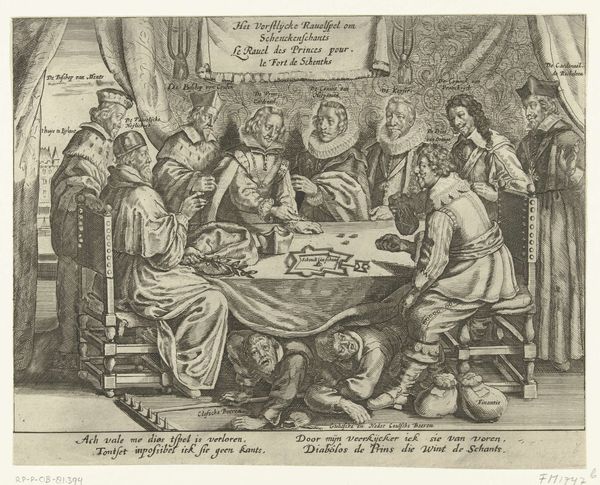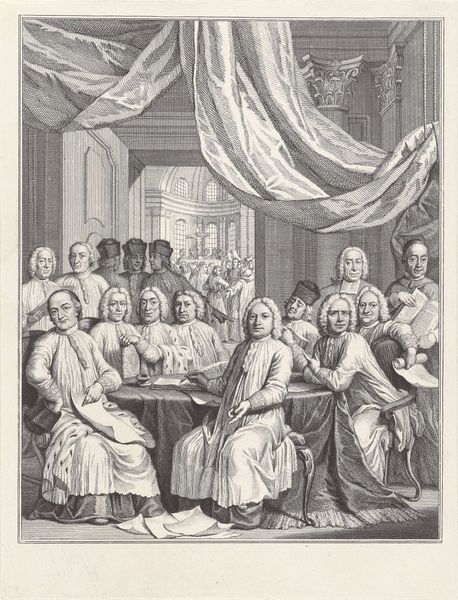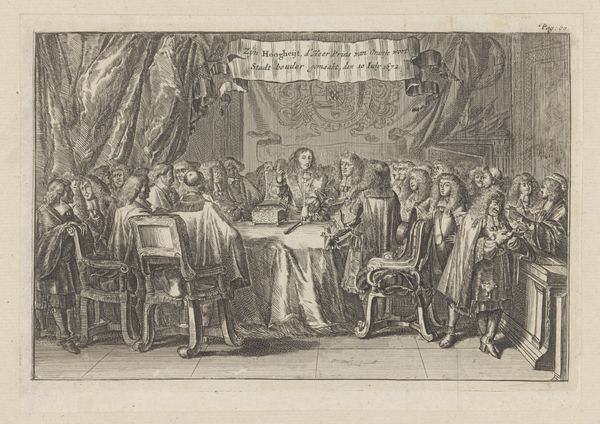
print, engraving
#
portrait
#
baroque
#
pen drawing
# print
#
pen illustration
#
history-painting
#
engraving
Dimensions: height 179 mm, width 300 mm
Copyright: Rijks Museum: Open Domain
Editor: Here we have an engraving entitled "Willem III ingezworen als kapitein-generaal, 1672," dating roughly from 1672 to 1685. It seems to depict a formal, very crowded ceremony. I'm struck by the intense focus on Willem III, but also by all the other figures and details crammed into the scene. What strikes you about it? Curator: For me, this print speaks volumes about the intersection of power, image-making, and national identity in the 17th century. It’s not just a record of an event; it’s a carefully constructed piece of political theater translated into a visual language. Notice the composition, almost stage-like? And consider, who was this print intended for? Editor: Presumably the Dutch public? To reinforce Willem’s authority? Curator: Precisely! Think about the symbolism embedded here. The artist wants us to view William as divinely ordained. The setting reinforces the importance of the event. Everything in the engraving is designed to communicate legitimacy and project strength, even at a time when Dutch power was increasingly shaped by merchant interests. Does considering that merchant interest, how the artist wants this event portrayed to further secure power of the time, alter your perception of the image? Editor: Absolutely. It makes me think about how images, even ones that look documentary, are always making a claim about power. Thank you! Curator: And thinking critically about those claims allows us to understand not just the art, but also the historical and social forces that shaped it.
Comments
No comments
Be the first to comment and join the conversation on the ultimate creative platform.
